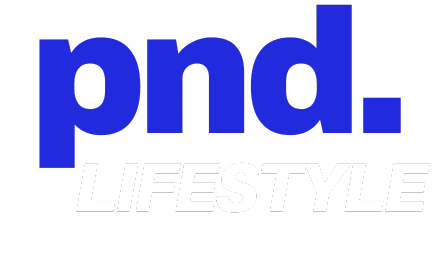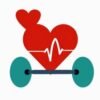11 Things To Consider Before Starting a Keto Diet: Crucial Facts You Need to Know Now

Are you ready to transform your body and health? The keto diet has taken the world by storm, promising rapid weight loss and improved energy levels.
But before you jump on the bandwagon, there are some key things you need to know.

Starting a keto diet can be a big change for your body and lifestyle. It’s not just about cutting carbs – there’s a lot more to consider.
From potential side effects to meal planning challenges, it’s crucial to be fully informed before diving in.
This guide will help you decide if keto is right for you and set you up for success if you choose to give it a try.
1) Consult Your Doctor
Before starting a keto diet, it’s crucial to talk to your doctor.
Your health history and current condition play a big role in whether keto is right for you.
Some medical issues may make keto unsafe.
These include kidney problems, liver disease, and certain metabolic disorders.
Your doctor can check if you have any nutrient deficiencies.
The keto diet can be low in some vitamins and minerals.
You may need supplements to stay healthy.
If you take medications, your doctor can advise on potential interactions.
Some drugs may need adjustment on a keto diet.
Pregnant or breastfeeding women should be extra careful.
Keto can affect hormone levels and nutrient needs.
Your doctor can also help monitor your progress.
They may suggest blood tests to check cholesterol and other markers.
Remember, keto is a major change for your body.
Professional guidance helps ensure you do it safely and effectively.
2) Understand Macronutrients

To succeed on a keto diet, you need to grasp macronutrients.
These are the main nutrients your body uses for energy: fats, proteins, and carbs.
On keto, you’ll eat mostly fats, moderate protein, and very few carbs.
This changes how your body produces energy.
A typical keto diet breaks down like this: 70-80% fat, 20-25% protein, and 5-10% carbs.
This is quite different from a standard diet.
Fats become your main fuel source.
You’ll eat foods like avocados, nuts, and olive oil.
These help you feel full and give you energy.
Protein is important for your muscles.
Aim for about 1 gram per kilogram of body weight.
Good sources include meat, fish, and eggs.
Carbs are limited to 20-50 grams per day.
This is very low.
You’ll need to avoid bread, pasta, and most fruits.
Tracking your macros is key when starting keto.
You can use apps or a food diary to help you stay on track.
Remember, everyone’s needs are different.
You might need to adjust your macros as you go along.
3) Plan Meals Ahead

Planning your meals is key to success on a keto diet.
You’ll need to think about what you’ll eat for breakfast, lunch, dinner, and snacks each day.
This helps you stick to your low-carb goals.
Make a 14-day meal plan to get started.
Include a variety of keto-friendly foods to keep things interesting.
Think eggs, meat, fish, low-carb veggies, and healthy fats.
Create a shopping list based on your meal plan.
This saves time at the store and prevents impulse buys.
Buy only what you need for your planned meals.
Prep some meals ahead of time.
Cook extra dinner to have leftovers for lunch.
Chop veggies or cook meat in batches.
This makes it easier to stick to your plan on busy days.
Keep some quick keto snacks on hand.
Nuts, cheese, or hard-boiled eggs are good options.
These can help you avoid reaching for high-carb foods when hungry.
Don’t forget about drinks.
Water is best, but you can also have unsweetened tea or coffee.
Plan for these in your daily routine.
By planning ahead, you set yourself up for keto success.
It takes some work at first, but it gets easier with practice.
Soon, meal planning will become a habit.
4) Read Food Labels
Reading food labels is key when starting a keto diet.
You need to know what’s in your food to stay in ketosis.
Look at the total carbs first.
Then subtract fiber to get net carbs.
Pay attention to serving sizes.
Some foods may seem low-carb, but not if you eat more than one serving.
Check for hidden sugars too.
They can show up under different names.
Fats are important on keto.
Look for healthy fats like those in avocados and nuts.
Avoid trans fats and unhealthy oils.
Protein is also crucial.
Make sure you’re getting enough, but not too much.
Too much protein can kick you out of ketosis.
Don’t forget about fiber.
It’s good for your gut and can help you feel full.
Look for foods with a few grams of fiber per serving.
Watch out for artificial sweeteners.
Some can raise blood sugar.
Others may cause digestive issues.
It’s best to avoid them when possible.
By reading labels carefully, you’ll make better food choices.
This will help you stick to your keto diet and reach your goals faster.
5) Stock Up on Keto-Friendly Foods

Getting ready for your keto journey means filling your kitchen with the right foods.
You’ll want to create a keto-friendly pantry that supports your new eating plan.
Start with proteins.
Stock up on eggs, chicken, beef, and fish.
These will be key parts of your meals.
Don’t forget about fats.
You’ll need plenty of healthy oils like olive oil, coconut oil, and avocado oil.
Nuts and seeds are good to have on hand too.
For veggies, focus on low-carb options. Cauliflower, broccoli, and cabbage are great choices.
They’re filling and versatile.
Dairy can be part of your keto diet too.
Pick up some cheese, heavy cream, and butter.
Just make sure they’re full-fat versions.
Having keto snacks ready is important.
Nuts, seeds, and cheese make quick, easy snacks.
You might also want to try pork rinds or beef jerky.
Remember to check labels when you shop.
Look for foods with low net carbs.
This will help you stay on track with your keto goals.
By stocking up on these keto-friendly foods, you’ll set yourself up for success.
It’s easier to stick to your diet when you have the right foods at home.
6) Find Carb Alternatives

Switching to a keto diet means cutting back on carbs.
But don’t worry – you can still enjoy many of your favorite foods with some smart swaps.
Instead of regular rice, try cauliflower rice.
It’s easy to make and has way fewer carbs.
Just grate a head of cauliflower or pulse it in a food processor.
For bread, use large lettuce leaves as a wrap.
They work great for sandwiches and burgers.
You’ll save about 18 grams of carbs compared to regular bread.
Craving pasta? Zucchini noodles are a tasty low-carb option.
Use a spiralizer to make long strands that cook up just like spaghetti.
When baking, swap wheat flour for almond or coconut flour.
These alternatives are higher in fat and protein but much lower in carbs.
For a crunchy snack, try kale chips or zucchini chips instead of potato chips.
They satisfy that salty craving without the carbs.
Mashed cauliflower makes a great stand-in for mashed potatoes.
Just steam and blend with butter and cream for a similar texture and taste.
With these swaps, you can stick to your keto plan while still enjoying familiar flavors and textures.
Get creative and experiment to find your favorite low-carb alternatives.
7) Monitor Ketosis Levels

When starting a keto diet, it’s important to track your ketone levels.
This helps you know if you’re in ketosis, the state where your body burns fat for fuel.
You can check ketones using blood, urine, or breath tests.
Blood tests are the most accurate but cost more.
Urine strips are cheaper and easy to use at home.
The ideal ketone range for weight loss is 1.5 to 3.0 mmol/L.
Levels above 0.5 mmol/L mean you’re in ketosis.
Don’t worry if it takes a few days to reach these numbers.
Test your ketones regularly, especially when you first start.
This lets you see how foods affect your ketosis.
You can adjust your diet based on the results.
Keep in mind that ketone levels can change throughout the day.
It’s normal to see some ups and downs.
Try to test at the same time each day for consistent results.
If you’re having trouble reaching ketosis, consider a keto diet plan for guidance.
These plans can help you choose the right foods to boost ketone production.
Remember, everyone’s body is different.
What works for someone else might not work for you.
Be patient and keep tracking your progress.
8) Stay Hydrated
Drinking enough water is crucial when starting a keto diet.
Your body will flush out more water than usual, so you need to drink more to avoid dehydration.
Aim to drink at least 75 fl oz of water daily on keto.
This helps replace the water you’re losing and keeps your body functioning well.
Electrolytes are important too.
When you drink more water, you lose minerals.
Try adding a pinch of salt to your water or eating foods rich in electrolytes.
Water-rich foods can help you stay hydrated.
Include cucumber, zucchini, and leafy greens in your meals.
These foods are keto-friendly and add extra hydration.
Watch out for signs of dehydration.
Feeling thirsty, having a dry mouth, or dark urine are all signs you need to drink more water.
Avoid drinks that can dehydrate you.
Caffeine and alcohol can make you lose more water, so limit these or balance them with extra water intake.
Keep a water bottle with you throughout the day.
This makes it easier to sip water regularly and track how much you’re drinking.
Remember, proper hydration helps your body adjust to the keto diet and can reduce side effects like headaches and fatigue.
9) Be Prepared for Keto Flu

When starting a keto diet, you might experience what’s known as “keto flu.” This is a set of symptoms that can occur as your body adjusts to using fat for fuel instead of carbs.
Common keto flu symptoms include headaches, fatigue, nausea, and irritability.
These usually last a few days to a week as your body adapts to the new way of eating.
To help prevent or reduce keto flu, make sure you drink plenty of water.
Your body loses water as it uses up stored glycogen, so staying hydrated is crucial.
Electrolytes are important too.
You may need to increase your intake of sodium, potassium, and magnesium.
Consider adding salt to your food or drinking bone broth.
Getting enough rest can also help you cope with keto flu symptoms.
Listen to your body and take it easy during the transition period.
If symptoms persist or become severe, don’t hesitate to talk to your doctor.
They can provide guidance and ensure you’re transitioning to keto safely.
Remember, keto flu is temporary.
Once your body adapts, you’ll likely start feeling more energetic and focused on your new diet.
10) Track Your Progress

Keeping tabs on your keto journey is key.
You’ll want to know if you’re making progress and staying on track.
There are many ways to do this beyond just stepping on the scale.
Tracking your macros is crucial on keto.
Count your daily intake of carbs, fats, and proteins.
This helps ensure you’re sticking to the right balance for ketosis.
Take body measurements regularly.
Your weight might not change, but you could be losing inches.
Measure your waist, hips, arms, and thighs every few weeks.
Pay attention to how your clothes fit.
You might notice your pants feeling looser even if the scale hasn’t budged much.
Keep a food diary.
Write down everything you eat and drink.
This can help you spot patterns and stay accountable.
Consider using a keto tracking app to make logging easier.
Many apps can calculate your macros and show your progress over time.
Don’t forget about non-scale victories.
Note changes in your energy levels, mood, and sleep quality.
These can be big signs that keto is working for you.
Take progress photos every few weeks.
Sometimes it’s hard to see changes day-to-day, but photos can reveal big differences over time.
Listen to your body.
How do you feel? Are you less hungry? More focused? These are important signs of progress too.
11) Limit Stress

When starting a keto diet, it’s important to keep your stress levels in check.
High stress can make sticking to any diet more challenging.
It may lead to cravings and emotional eating.
Stress can also affect your body’s ability to enter ketosis.
When you’re stressed, your body produces cortisol.
This hormone can raise blood sugar levels, potentially interfering with ketosis.
Try to incorporate stress-reducing activities into your daily routine.
This could include meditation, yoga, or deep breathing exercises.
Regular exercise can also help manage stress levels.
Getting enough sleep is crucial for stress management.
Aim for 7-9 hours of quality sleep each night.
A well-rested body is better equipped to handle the changes that come with a new diet.
Consider stress management techniques to support your keto journey.
These can help you stay focused on your goals and maintain ketosis more easily.
Remember, a keto diet is about more than just what you eat.
It’s a lifestyle change that works best when you take care of your whole self, including your mental health.
Understanding the Keto Diet

The ketogenic diet is a high-fat, low-carb eating plan that can lead to significant changes in your body’s metabolism.
It aims to shift your body into a state of ketosis, where it burns fat for fuel instead of carbohydrates.
What Is a Keto Diet?
A keto diet severely restricts carbohydrate intake while increasing fat consumption.
You typically eat less than 50 grams of carbs per day.
The rest of your calories come from fat and moderate protein.
A typical keto meal plan includes:
- Meats and fatty fish
- Eggs
- Butter and cream
- Cheese
- Nuts and seeds
- Healthy oils like olive oil
- Avocados
- Low-carb veggies
You’ll need to avoid:
- Sugary foods
- Grains and starches
- Most fruits
- Beans and legumes
- Root vegetables
How Does Keto Diet Work?
When you cut carbs, your body enters ketosis.
In this state, your liver produces ketones from fat to fuel your body and brain.
This metabolic shift usually happens within 3-4 days of starting the diet.
You may experience some initial side effects as your body adjusts.
These can include headaches, fatigue, and irritability.
To stay in ketosis, you need to keep your carb intake very low.
Many people track their macronutrients carefully to ensure they’re not eating too many carbs.
Health Benefits of the Keto Diet
The keto diet may offer several health benefits:
- Weight loss: It can be an effective way to shed pounds quickly.
- Blood sugar control: It may help manage type 2 diabetes.
- Improved heart health: It might reduce risk factors for heart disease.
- Brain function: Some studies suggest it could help with certain neurological conditions.
However, the diet can be challenging to follow long-term.
It’s important to consult with a healthcare provider before starting, especially if you have any health conditions.
For a comprehensive guide on starting and maintaining a keto diet, check out this detailed keto diet plan.
It provides meal plans, recipes, and tips to help you succeed on your keto journey.
Nutritional Guidelines

The keto diet has specific nutritional rules to follow.
Knowing what to eat and avoid is key for success on this eating plan.
Macronutrient Breakdown
On a keto diet, you need to adjust your macronutrient intake.
Aim for:
- 70-80% of calories from fat
- 20-25% from protein
- 5-10% from carbs
This means eating about 20-50 grams of carbs per day.
Your exact needs may vary based on your activity level and goals.
Tracking your food intake can help you hit these targets.
Many apps can calculate your macros for you.
Be sure to get enough calories to maintain your energy.
Keto-Friendly Foods
Fill your plate with these keto-approved foods:
- Meat and poultry
- Fish and seafood
- Eggs
- Full-fat dairy
- Nuts and seeds
- Low-carb veggies (leafy greens, broccoli, cauliflower)
- Healthy oils (olive oil, coconut oil, avocado oil)
These foods are high in fat and low in carbs.
They’ll help you stay in ketosis. Avocados are a great choice, as they’re high in healthy fats and fiber.
Choose whole, unprocessed foods when possible.
This ensures you get important nutrients along with your macros.
Foods to Avoid on Keto
To stay in ketosis, you’ll need to avoid:
- Grains and starches
- Most fruits
- Sugar and sweets
- High-carb veggies (potatoes, corn)
- Legumes
- Most alcohol
These foods are high in carbs and can kick you out of ketosis.
Even small amounts can affect your progress.
Be careful with “low-carb” packaged foods.
They often contain hidden sugars or starches.
Always check labels and ingredients.
Remember, drinks count too.
Stick to water, unsweetened coffee, and tea.
Avoid juice, soda, and most alcoholic drinks.
Potential Risks and Considerations

Starting a keto diet has some risks and factors to think about.
You should know about possible side effects and who might need to avoid this diet.
Possible Side Effects
The keto diet can cause short-term issues like “keto flu.” You might feel tired, dizzy, or have headaches at first.
Your body needs time to adjust to using fat for fuel instead of carbs.
You may also get constipated due to less fiber.
Drinking more water and eating low-carb veggies can help.
Some people get bad breath from ketones.
Long-term risks can include kidney stones and heart problems.
Your cholesterol might go up if you eat lots of saturated fat.
It’s smart to have your doctor check your health while on keto.
Who Should Avoid Keto Diet?
Keto isn’t safe for everyone.
You should avoid it if you have pancreas, liver, thyroid, or gallbladder issues.
People with diabetes need to be extra careful and talk to their doctor first.
Pregnant or breastfeeding women shouldn’t do keto.
It might not give enough nutrients for a growing baby.
Athletes may find it hard to perform at their best without carbs for energy.
If you have a history of eating disorders, keto’s strict rules might be risky.
Always check with your doctor before starting any new diet, especially one as low in carbs as keto.
Frequently Asked Questions
Starting a keto diet brings up many questions.
Here are answers to some common ones to help you begin your keto journey safely and effectively.
What are the essential foods to include on a ketogenic diet for beginners?
Focus on high-fat, low-carb foods.
Good choices include eggs, meat, fish, avocados, nuts, and healthy oils like olive or coconut oil.
Add low-carb veggies like spinach, kale, and broccoli.
Cheese and full-fat dairy can fit in too.
What is the safest way to start a ketogenic diet to protect kidney health?
Start slowly and stay hydrated.
Drink plenty of water and add salt to meals. Consult your doctor before starting, especially if you have existing kidney issues.
Monitor your protein intake and don’t overdo it.
Can a ketogenic diet be initiated at home without cost, and how?
Yes, you can start keto at home on a budget.
Plan simple meals using affordable keto foods.
Eggs, canned fish, and frozen veggies are cheap options.
Cook at home instead of buying pricey keto products.
What are the primary pros and cons of adopting a ketogenic diet?
Pros include potential weight loss and improved blood sugar control.
Some people report more energy and mental clarity.
Cons may include initial “keto flu” symptoms, limited food choices, and difficulty sticking to it long-term.
What is the ideal first meal of the day on a ketogenic diet?
A good keto breakfast includes protein and healthy fats.
Try eggs with avocado and spinach.
Or make a smoothie with coconut milk, protein powder, and berries.
Bacon and cheese are tasty options too.
What are the fundamental rules to follow when starting a ketogenic diet?
Keep carbs very low, usually under 50g per day.
Eat enough fat to feel satisfied.
Get adequate protein but don’t overdo it.
Stay hydrated and replace electrolytes.
Read food labels carefully to avoid hidden carbs.






